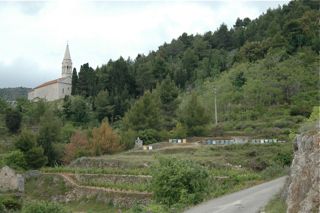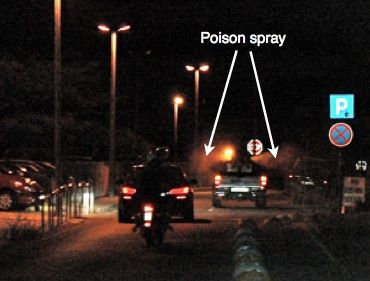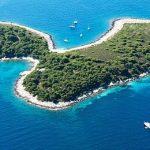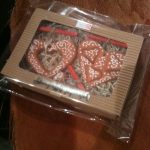Guest blog from Vivian Grisogono on the policy of pest control spraying on Hvar.
On 28th July, we passed on the official warning from Zagreb firm Ekocijan that spraying against mosquitoes and flies would take place round the roads of Stari Grad and environs on 31st July and Jelsa and its outlying villages, including Pitve, the following night.
Evidently there was a change of plan, as the poison-propelling vehicle rumbled through the village of Pitve at 23:15 last night, 31st July. There was no warning, no time for those with ‘breathing problems’ to go indoors and close windows, as per the official guidelines. To put it into context, there is one resident in Pitve with such severe lung disease he is permanently hooked up to a portable oxygen machine. Airborne poisons are definitely not in his best interests.

When Ekocijan announces its spraying schedule, there is no mention of the substances used, beyond the reassurance that they are harmless to warm-blooded creatures: ‘Dezinsekcija će se obaviti preparatima neškodljivim toplokrvnim životinjama.’
Alongside the warning to people with breathing problems is a specific instruction to beekeepers to shut their bees in during the spraying: ‘Moli se pučanstvo koje ima problema sa dišnim organima da zatvori prozore te pčelare da zatvore svoje pčele’. There is a stand of hives near the Pitve road, pictured above. Did the warning reach them in time?
Beekeepers have particular reason to be concerned, and their Association (Hrvatski pčelarski savez) has identified the poisons used on Hvar as a mixture based on Cypermethrin and Permethrin, which are pyrethroids. Both kill bees, fish and aquatic insects. Permethrin, which is used for flea control in dogs, is toxic to cats, and can kill cats treated with flea treatments meant for dogs. While they are considered low risk for humans, over-exposure can cause breathing difficulties, headaches, nausea, muscle weakness, seizures and damage to the central nervous system.
In other areas of Croatia, insecticide spraying is based on Permethrin alone. It is said that the positive energy created by prayer or meditation increases fivefold when several people pray together. Has anyone calculated the multiplied negative strength of mixed poisons?

The warning system about the spraying is inadequate. On the evening of 30th July, I was walking out of Hvar Town to the car park shortly before midnight when the poison-propeller lumbered past and unleashed its toxic cloud into the air at head level. No choice but to walk through the poison, just as the cars following the vehicle making its ponderous way up the hill had to inhale and absorb the toxins, willy-nilly. I am extremely sensitive to pollutants and pesticides. It was a disastrous end to a fine evening out in our ‘big city’.
Poisons are not the solution to pests, indeed they probably exacerbate the problems. Short-term, a certain number of unwanted insects or creatures die (alongside beneficial ones). Longer-term, the survivors develop resistance to each poison, hence the need for ever-stronger preparations. Effective solutions depend on furthering natural resources or predators to control the insects and creatures we consider pests.
Hvar’s clean air was the basis of tourism on the island. Poisoning the air kills that concept stone dead. The policy and its implementation need re-thinking.
© Vivian Grisogono, August 2012










